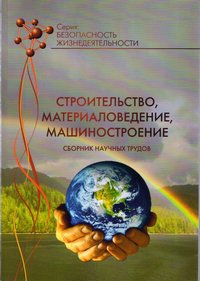Analysis of the influence of incoming components on the thermophysical properties of the coating under fire exposure
DOI:
https://doi.org/10.30838/P.CMM.2415.250918.35.128Keywords:
flame retardants that bubbled, flameproof, fire, fire resistance of wooden structures, the effectiveness of fireproof coatingsAbstract
Purpose. Development of fire protection composition and study of its properties: definition of fire protection group of the proposed coating. Methodology. In the course of the research, an analytical review of the main groups of fire retardants, which increase the fire resistance of wooden construction constructions, gave an assessment of their technical characteristics, as well as in accordance with DSTU B V.1.1-4-98 "Fire protection. Building constructions. Test methods for fire resistance. General requirements "defines the fire-protective properties of the developed fire protection coating. Findings. The authors developed a composition of flame retardant coating that forms on the surface, which "protects" a thin non-transparent layer that prevents inflammation and spread of flame on a wooden structure. The selection of composition of fire protection composition was carried out according to the scheme "compound - the additive that is flowing -the filler". The basis of the coating is liquid glass, because it has such positive characteristics as accessibility, due to the manifestation of liquid glass adhesive properties - the ability to spontaneous hardening with the formation of artificial silica. An increase in the content of fillers can increase the use interval of the composition to 900-9200С, and the maximum temperature at which provides the swelling of the coating 540-6800С. According to studies, the highest fire-retardant coating efficiency is achieved with content in the composition of asbestos-cement waste from 15.0 to 22.5%, aluminum-calcium slag from 7.5 to 10.0%. An increase in the content of fillers and technical drill for a rational area reduces the heat-shielding ability of the coating and reduces the fire-retardant effectiveness of the coating. Adding to the flame retardant composition sulfite-alcoholic membrane greatly improves the adhesion of the coating from the protected surface, which also affects the fire-protective ability of the coating, it grows to 76.0-81.0 minutes. Originality. Taking into account the theoretical preconditions, the choice of output components for a new fire protection composition has been carried out. Practical value. A new nonflammable spillway structure is developed, which allows the transfer of combustible materials into a group of heavier and increase fire resistance of building structures. On the developed fireproof composition the Ukrainian patent for utility model was obtained.
References
Statistika pozhezh [Fire statistics]. Ukrayinskiy naukovo-doslidniy Institut tsivilnogo zahistu. [Ukrainian Research Institute of Civil Protection]. Available at: http://undicz.dsns.gov.ua/ua/STATISTIKA-POZHEZH. (in Ukrainian).
Korolchenko A. Ya. and Korolchenko O. N. Sredstva ognezaschity [Means of fire protection]. — Moskva : Pozhnauka, 2006. — 258 p. (in Russian).
Belikov A. S., Shalomov V. A., Korzh E. M. and Ragimov S/ Yu. Povyishenie ognestoykosti derevyannyih stroitelnyih konstruktsiy za schet snizheniya goryuchesti drevesinyi [Increase of fire resistance of wooden building structures due to reduction of flammability of wood] Stroitelstvo, materialovedenie, mashinostroenie – [Construction, materials science, mechanical engineering]. PDABA. Dnipro, 2017, no. 98, pp. 38-45. (in Russian).
Cadorin J. F., Perez Jimenez C. and Franssen J. M. Influence of the section and of the insulation type on the equivalent time // Proceedings of the 4th International Seminar on Fire and Explosion Hazards. Un iversity of Ulster, 2011. pp. 547–557.
Dou H. S., Tsai H. U. and Khoo B. Ch. Simulation of detonation wave propagation in rectangular duct using three dimensional WENO scheme // Comb. Flame. 2012. V. 154. pp. 644-647.
Roitman V. M. Fire testing of Building Materials in View of the Moisture Factor.— First European Symposium of Fire Safety Science (Abstracts).— Zurich. ETH. 2005. - pp. 135-136.
Downloads
Published
Issue
Section
License
Редакція Видання категорично засуджує прояви плагіату в статтях та вживає всіх можливих заходів для його недопущення. Плагіат розглядається як форма порушення авторських прав і наукової етики.
При виявлені у статті більш ніж 25% запозиченого тексту без відповідних посилань та використання лапок, стаття кваліфікується як така, що містить плагіат. У цьому випадку стаття більше не розглядається редакцією, а автор отримує перше попередження.
Автори, в статтях яких повторно виявлено плагіат, не зможуть публікуватися в усіх журналах Видавництва ДВНЗ «Придніпровська державна академія будівництва та архітектури».
Автори, які публікуються у цьому журналі, погоджуються з наступними умовами:
- Автори залишають за собою право на авторство своєї роботи та передають журналу право першої публікації цієї роботи на умовах ліцензії Creative Commons Attribution License, котра дозволяє іншим особам вільно розповсюджувати опубліковану роботу з обов'язковим посиланням на авторів оригінальної роботи та першу публікацію роботи у цьому журналі.
- Автори мають право укладати самостійні додаткові угоди щодо неексклюзивного розповсюдження роботи у тому вигляді, в якому вона була опублікована цим журналом (наприклад, розміщувати роботу в електронному сховищі установи або публікувати у складі монографії), за умови збереження посилання на першу публікацію роботи у цьому журналі.
- Політика журналу дозволяє і заохочує розміщення авторами в мережі Інтернет (наприклад, у сховищах установ або на особистих веб-сайтах) рукопису роботи, як до подання цього рукопису до редакції, так і під час його редакційного опрацювання, оскільки це сприяє виникненню продуктивної наукової дискусії та позитивно позначається на оперативності та динаміці цитування опублікованої роботи (див. The Effect of Open Access).

